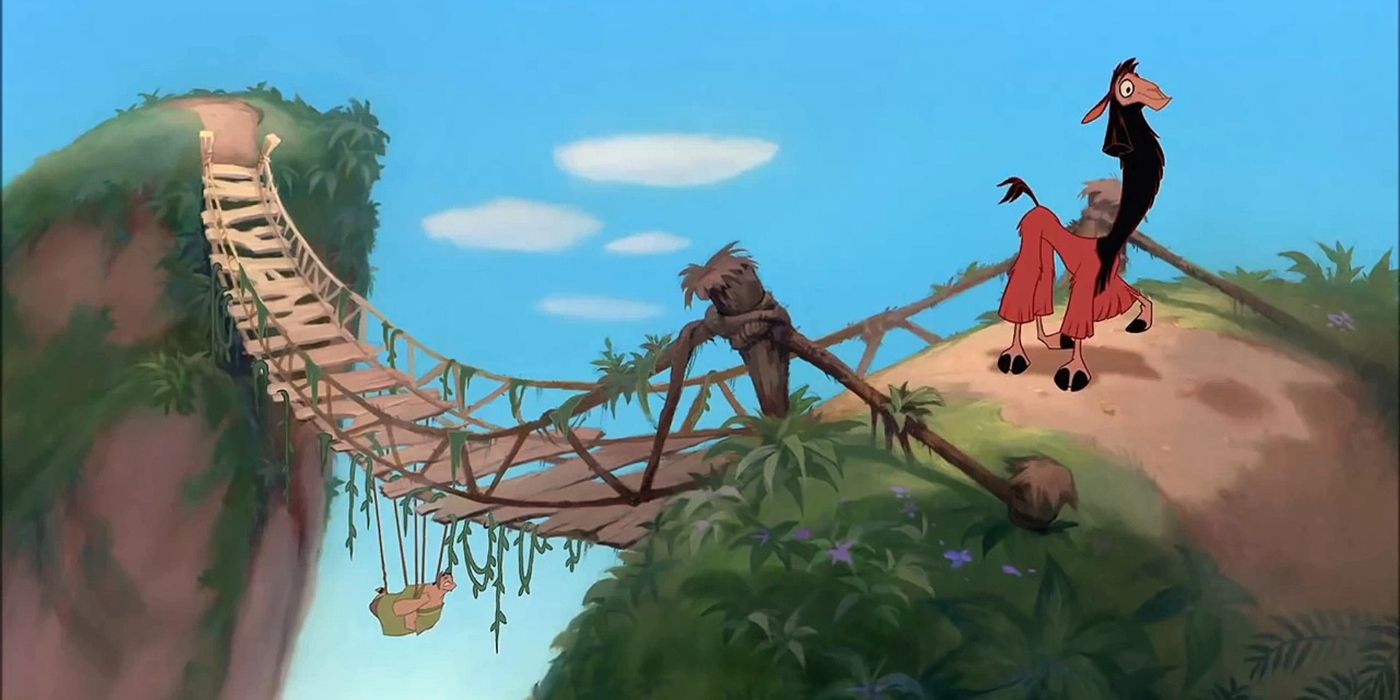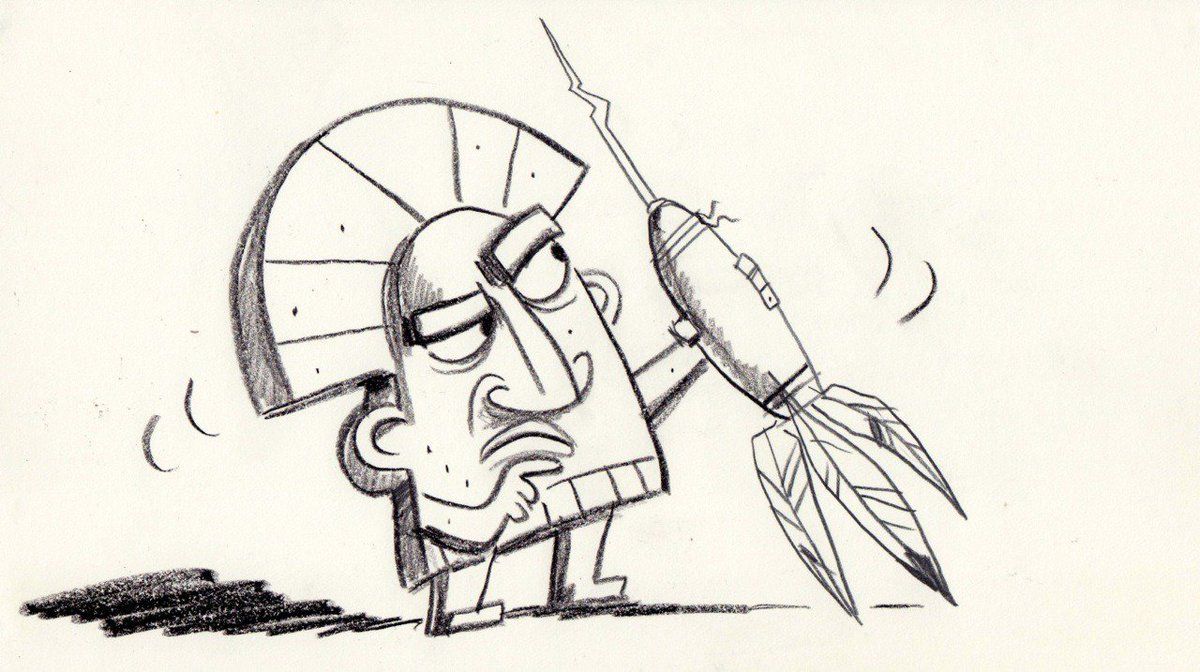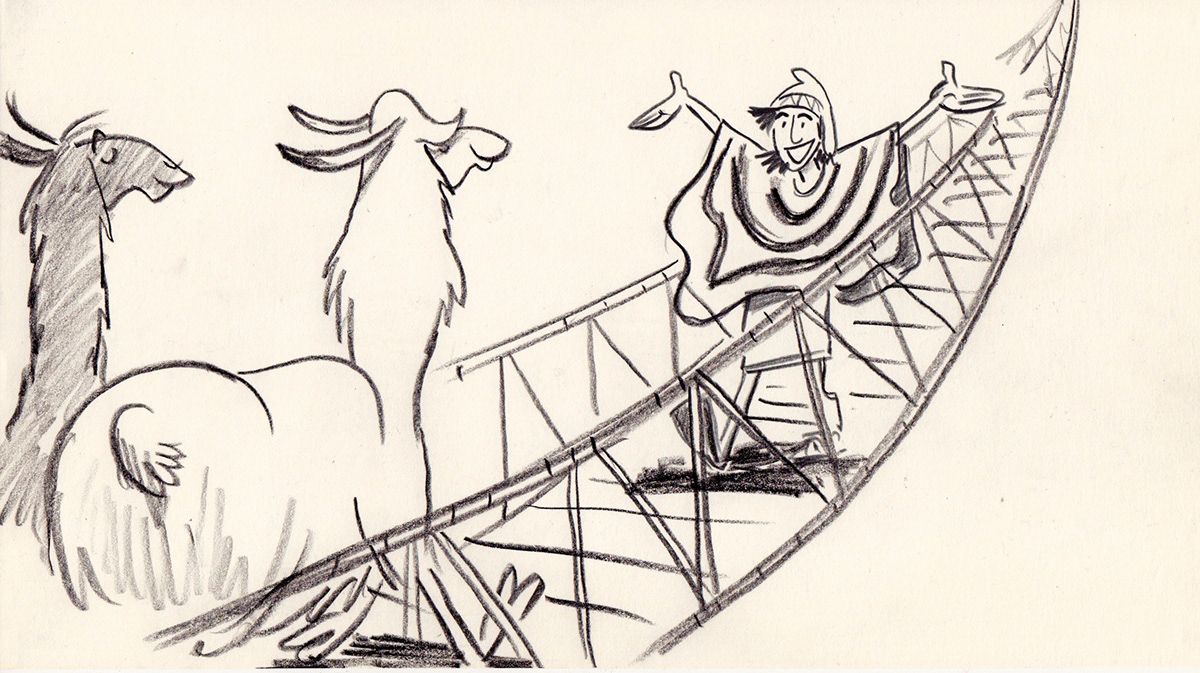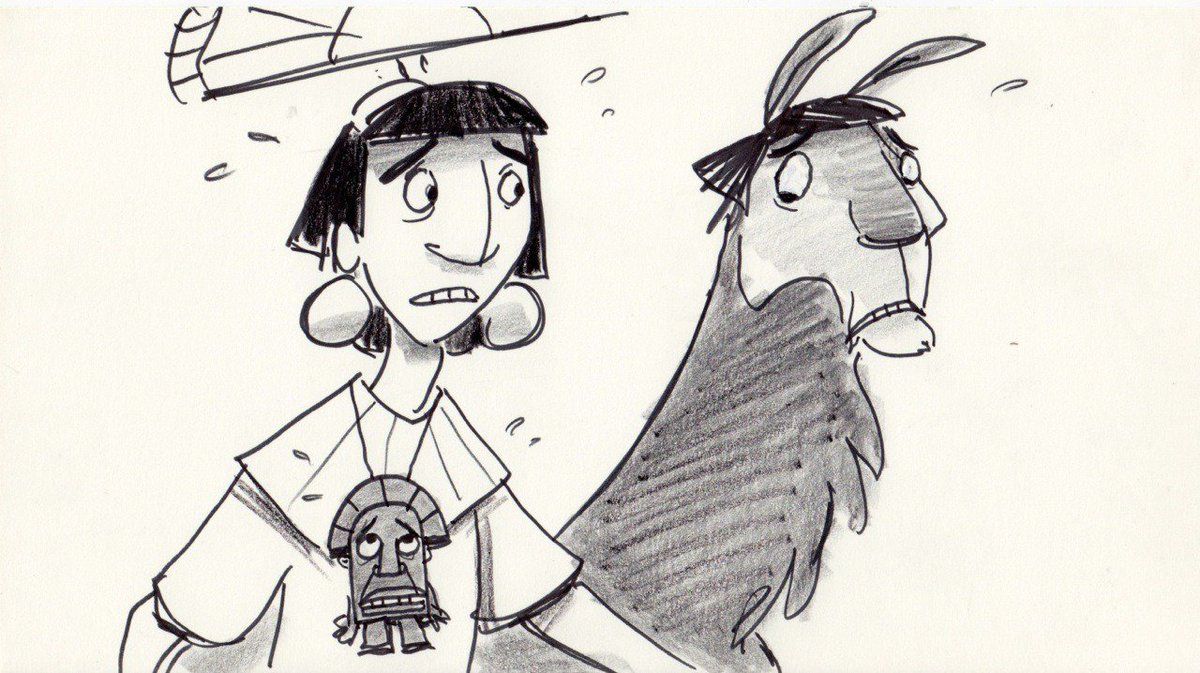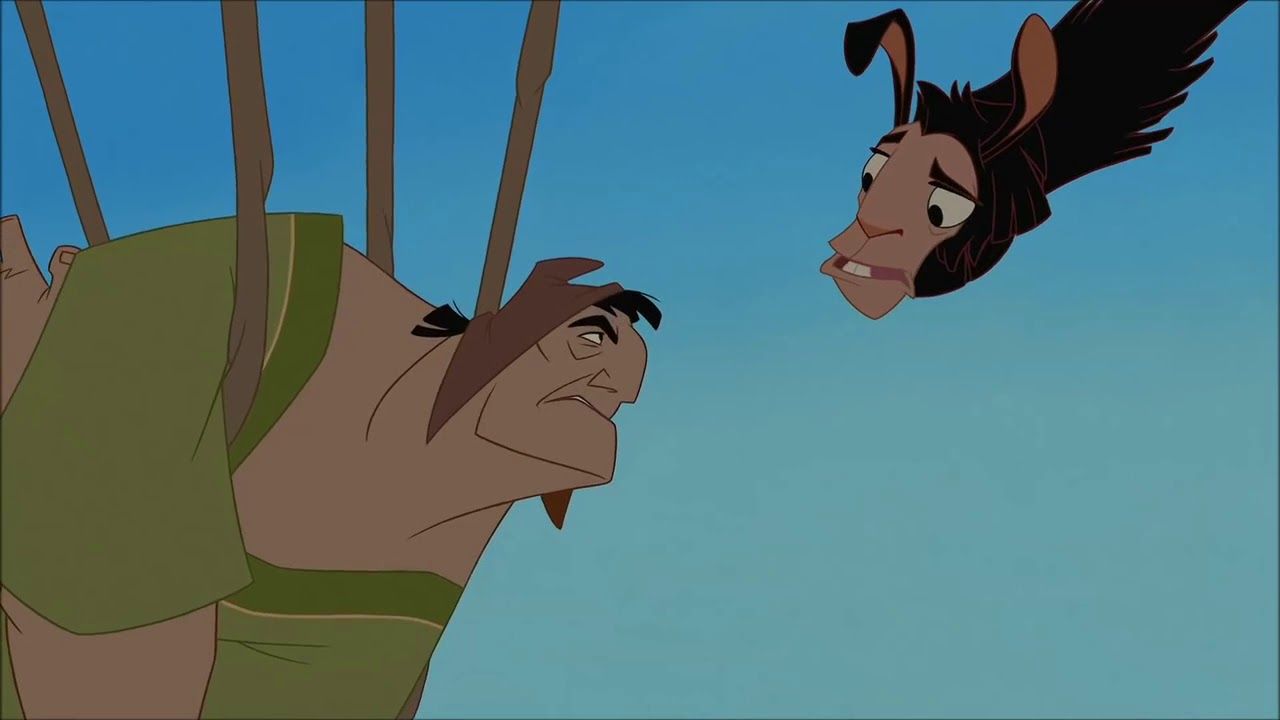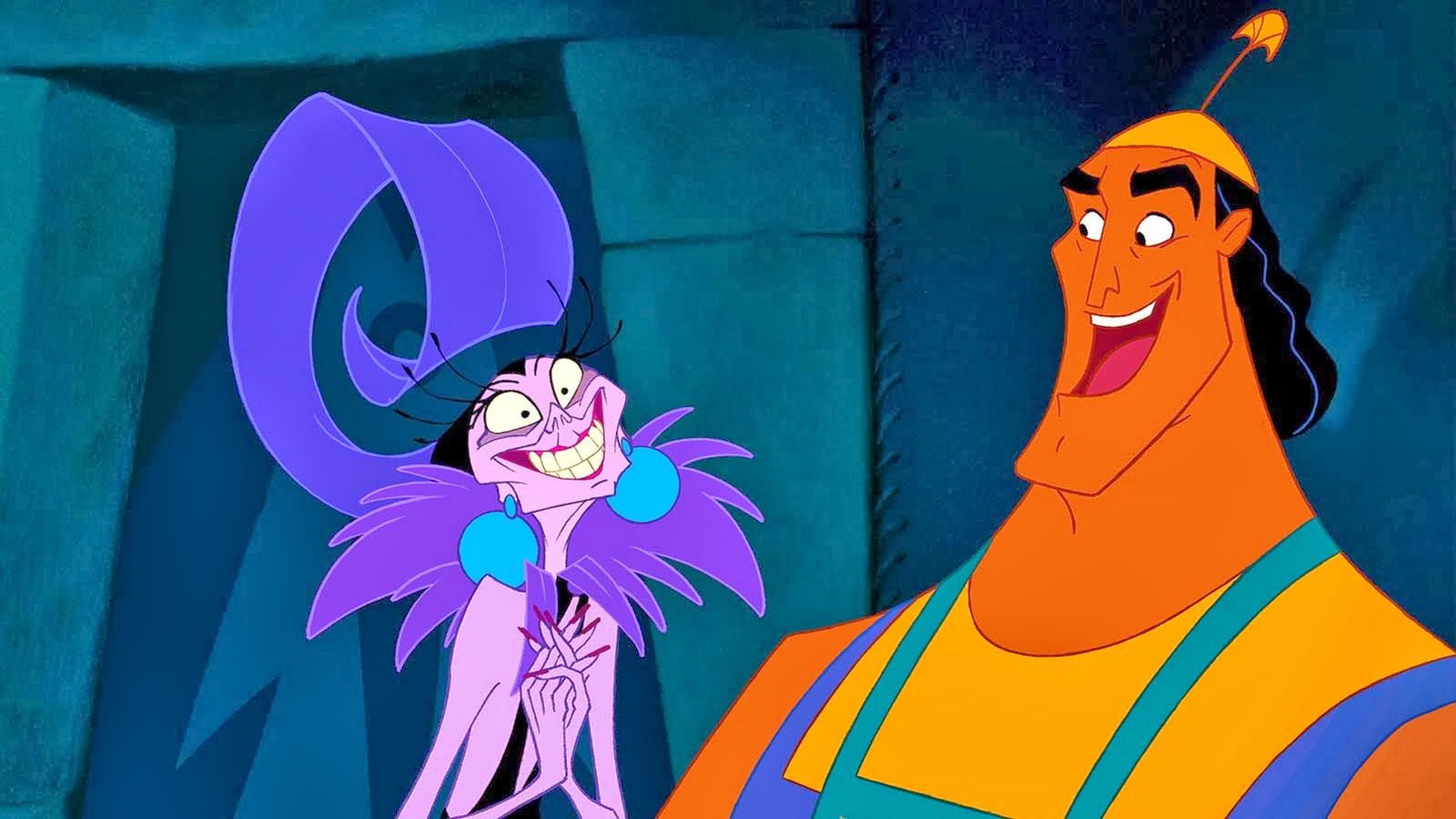Disney’s The Emperor’s New Groove was released 20 years ago. After surviving one of the more infamous (and disastrous) productions in Disney Animation history, it was accompanied by one of the all-time worst marketing campaigns in the company’s history and was saddled a title that doesn’t mean anything, really, especially in the context of the movie. Critics were kind but the movie didn’t make much money, debuting in fourth place at the domestic box office and grossing $169 million worldwide (a pittance compared to The Lion King’s near $800 million haul). Disappearing from theaters quickly, The Emperor’s New Groove would have an unlikely resurrection years later as a true cult classic, celebrated for its individuality (especially in the context of Disney Animation), endlessly quotable dialogue and lovable characters (Kronk, we heart you). In other words: boom, baby.
Kingdom Come
Following the release of The Lion King in 1994, director Roger Allers, who along with Rob Minkoff had rescued the film (after an initial version by Oliver & Company filmmaker George Scribner had faltered during development), was truly untouchable. After The Lion King shattered box office records (and Minkoff had left the studio to develop live-action projects), the studio came to him with a proposal: what about an animated feature set in South America? “I looked at them and said, ‘Ooh, the Incas.’ I gathered a crew to do a picture inspired by a setting like Machu Picchu, a city up on the mountains,” Allers said at the time (recounted in the fly-on-the-wall documentary The Sweatbox; more on this later). “The challenge is making something of the Inca culture and make it come alive and perhaps once existed but doesn’t anymore.” From this grand idea, Allers would give it an equally grand name: Kingdom of the Sun.
Allers pitched the idea to Disney executive Michael Eisner, who told Allers, “It has all the elements of a classic Disney film.” Initially, Randy Fullmer and Don Hahn, who had produced The Lion King and Beauty and the Beast, were both on board as producers. But when Atlantis: The Lost Empire ramped up, Hahn left to mostly focus on that, still retaining his executive producer credit and helping first-time producer Fullmer when needed (which, spoiler alert, would turn out to be way more than either of them anticipated). “It has to speak to you. I was lucky enough in my career that I could make a choice. I was excited about choosing a new genre,” Hahn told me. “Kingdom of the Sun was still trying to find its legs.”
And it’s true – Kingdom of the Sun was a true epic. It combined a Prince and the Pauper-type story about a vain young emperor (played by David Spade) and a lowly llama farmer (Owen Wilson) who look identical and trade places. One of them also gets transformed into a llama by an evil sorceress named Yzma (Eartha Kitt), who wishes to maintain her youth and beauty by vanquishing her eternal foe: the sun. There was also, for some reason, a tiny stone idol voiced by that icon of South American culture Harvey Fierstein.
Kingdom of the Sun contained a lot of exciting elements; perhaps too many exciting elements. But it was enough to attract serious talent. Andreas Deja, one of the studio’s most celebrated animators, known for his work on unforgettable villains like Gaston from Beauty and the Beast and Scar from The Lion King, would be animating Yzma (and his designs and animation were breathtaking). At the time Deja said that he signed on to animate Yzma because as a baddie, she was “a little campy, a little over-the-top,” something he’d never really done before. He described the assignment as “a dream come true.”
Another key Kingdom of the Sun collaborator would come in the form of Sting, who had agreed to write the songs for the movie. “I leapt at the idea. Writing funny songs, love songs, that have nothing to do with my life. This whole song is about llamas in Inca society and the premise is the entire civilization is dependent on the llama because you can’t have a civilization if you don’t have any clothes on,” Sting says in The Sweatbox (which was directed by his wife, Trudie Styler). “The only problem was they hadn’t really settled on a script. I was writing songs in the dark.” Fullmer was impressed with Sting’s level of commitment and the craft of his songwriting: “Sting was like a mathematician. He taught math at school. And once he showed us a notebook of all the song ideas he had for the movie and it was at least 100 pages. It looked like algebraic equations. He thinks of songs in beats and meter. That’s why nobody else can sing a Sting song.” Some of the songs he had written were really, really great. And they’d never see the light of day.
In order to wrangle the story, Mark Dindal, who had worked on The Little Mermaid and Aladdin (and directed the amazing animated sequence in The Rocketeer), was called in to help. Dindal was finishing his feature directorial debut Cats Don’t Dance, when he got the call: they wanted him to direct Kingdom of the Sun alongside Allers. “They were writing, boarding. I am pretty sure they had some scenes done in editorial. I don’t they had a full screening yet,” Dindal remembered. “That was yet to come.”
Almost immediately, Fullmer knew they were in trouble. It would take Allers an hour just to pitch the movie. “I even got on an airplane once in New York after recording Sting and I sat down next to a really nice gal. She asked, ‘What are you working on?’ And I started pitching the story and I got done about 5 minutes before we landed in Los Angeles,” Fullmer said, still in a state of disbelief. “You had warning signs very early on that there was too much story there. It was confusing. And Roger, who is a wonderful guy, you couldn’t talk him out of it. He wanted to hold onto every element.”
Work progressed for the next three years – designs were finalized, sequences were animated, songs were written (only Sting could make a song that rhymed “llama” with “panorama” and have it be as catchy as anything on the radio). But little progress was made on a story that made sense and resonated emotionally. “They felt like a co-director could help, in that capacity, initially,” Dindal recalled. But his attempts to streamline the project and inject more humor weren’t helping. “Even the stars were baffled. Spade, in The Sweatbox, attempted to recount the plot: “The llama, they’re on their own. I don’t know what they’re going to do with that.” As it turned out, nobody knew.
After a particularly disastrous screening that Sting attended (and that was documented in The Sweatbox), Thomas Schumacher, who began at the studio as a producer on The Rescuers Down Under before being promoted to President, Walt Disney Feature Animation (as it was then known), laid into the team. “For me, so much of the movie isn’t working. I don’t know who I’m supposed to care about, what I’m watching. The pace seems really wacky. It’s so leaden. I’m not having much fun,” Schumacher said. In the same meeting Sting sheepishly chimed in: “I enjoyed the movie far more than I thought I would.” A brain trust of some of Disney Animation’s most creative minds, including filmmakers Gary Trousdale, Kirk Wise, Ron Clements, John Musker, and celebrated story man Joe Ranft, were assembled to give notes. (They had plenty.) Fullmer remembers Schumacher addressing Allers and saying, “If it was anybody else but you I would have shut this thing down.” Not only had Allers made a big hit for the company with The Lion King, but he had also pulled that project out of the fire. He had experience with triage. But it was clear – the movie was in big, big trouble.
Finally, it got to the point where the movie was, if not completely shut down, then temporarily paused. Internally, rumors swirled – whole characters were being cut, the setting was going to be changed to Nebraska and all of the llamas were going to become sheep – while the production team did everything they could to stay afloat. Hahn remembers making calls to Arnold Schwarzenegger’s people, offering them the role of the little stone idol that Harvey Fierstein was voicing, in an attempt to inject any kind of excitement into a project that seemed to be buckling under the weight of its ambition. "Climbing this mountain, you were looking for any foothold," Hahn said. They kept looking.
During this time Schumacher visited Fullmer in his office. “He was almost crying, having a panic attack almost. He laid it all on my feet, which I feel like we all had shared blame in it,” Fullmer said. “He said, ‘You have no idea what it’s going to be like if I have to walk across the street and tell Michael Eisner, after spending $40 million, that we’ve got nothing. So you guys better come up with something. This is it.’ It was semi-threatening.” A little while earlier storyboard artist Chris Williams (who would go on to direct Big Hero 6 and co-direct Moana) pitched a version of the movie with little of the grand, mythological elements that instead just focused on a bratty emperor who is turned into a llama. It was simple and straightforward and funny. The executives liked the new idea and hatched an insane plot: they would hold a bakeoff. Dindal would present his version and Allers his, and neither one would know that the other was working on a new pitch.
“They had come to a point where, and I had never had this experience before, but they asked me, Dave Reynolds, who eventually wrote the movie, and Chris Williams, the three of us got together and Chris boarded a scene that Dave wrote. It represented the spirit of the final movie,” Dindal said. “Each of us had a presentation. I didn’t see what he was doing and he didn’t see what I was doing. But we presented them to the executives. And they ended up choosing the direction we were going in. That was the awkward part. If they had said, ‘Hey will you do a bake-off?’ I probably would have said no. But that’s what happened. That is the turn it took.” Ultimately, Allers didn’t have a chance. “It was too much like what he had before. He’d let go of a few things but not enough,” Fullmer said. “When you screen the movie and people just don’t get it. There’s a point where it’s not debatable.” Hahn said he was not involved in choosing Dindal’s version over Allers’ but he might have “put his thumb on the scale.”
Version 2.0
The decision was made and Dindal’s version was chosen. It was lighter, funnier, clearer. “I have mixed feelings,” Dindal said. “I was excited when they chose to go the direction I was more in tune with but also at the same time I was brought on to help Roger make his movie.” In The Sweatbox Allers said, “I feel like I’m standing here with fragments of confetti falling through my fingers. I was up half the night grieving over this whole thing.” Allers, who by all accounts was a total gentleman and pro, stayed on at Disney for a little while, described the new version of the movie in the documentary later as: “The ghost of one corpse went into another body and is walking around looking very different. It’s not like the whole thing completely died. There’s this other thing that’s continuing on.”
One of the more uncomfortable moments in The Sweatbox is watching Fullmer call Sting to tell him that the movie has essentially been canceled and that his songs won’t be repurposed for the new version. “In that call he said, ‘You know I set aside two years and did all these songs and you guys seemed to like them.’ All that was true. We did like them but there was also the context of the service of the story,” Fullmer said. “It was his first Disney movie and last and he didn’t understand what it would be like.” Still, Sting agreed to stay on, although by several accounts he became increasingly frustrated and tried to quit the project several times before the movie was released. "He seriously would send regular resignation letters to Randy," Hahn said. "Randy said, 'I’m just going to ignore these.'"
The new version of the movie, now called Kingdom in the Sun (a small but important change), was off to the races. “When you’re in quicksand for the longest time and you feel like you’re working so hard and getting nowhere and you finally break loose of that, that’s what that last year felt like. It was such a breath of fresh air,” Fullmer said. They had convinced Schumacher that Dindal could do the movie on his own. And Dindal had his own distinct, creative vision for what the movie could be. As a child, he told me, he would accompany his mom to Sears on Saturday morning. He didn’t have a color TV at their house, so he and his brother would plop down in front of the array of color televisions while his mother would shop, absorbed and transported by the cartoons on the screens, including the old Warner Bros. Looney Tunes shorts. “I was mesmerized,” he said. “A big influence was the Looney Tunes sense of humor was ingrained at an early age.” You can see that influence, writ large, in the new version of the film.
With two years to get an entire movie finished, the production didn’t have time to second guess or ideate. “That was the fastest movie I’ve ever worked on,” Dindal said. While the story went through another few versions, they didn’t waste time trying to make things work. If things didn’t land, they were jettisoned quickly. The production didn’t have a script for the movie until the very end, which was just a stapled together version of scenes that made it into the final film. “It was the most like live television that feature animation could ever be,” Dindal said. Hahn added: “There wasn’t a lot of time to do redos and because of that there’s a real freshness to it.” With this new version of the movie, no idea was too outlandish. “Often what would happen on other movies is people would suggest something that was just too silly for the movie or just out of left field. But this was the only movie where someone would make a suggestion and we’d go, ‘Oh, let’s use that,’” Dindal said. A great example of this is the moment when Yzma, in kitten form, is falling off the tower, only to be sprung back up thanks to a trampoline salesman being at the bottom of the ravine. “You’d never put that in Bambi or Pinocchio. This was the one movie where that idea worked in terms of the tone. That was fun because you’d spend hours working out the mechanics of getting her back onto the tower. But that doesn’t really matter. You just need her back up on the tower. This movie allows you to come up with a nonsensical, silly, absurd thing that lets you get back to the story,” Dindal said. Hahn added: “There was incredible energy in the story room.” There had to be.
The new story did maintain the transformation of a bratty emperor into a llama although his name went from Manco to Kuzco (still, incredibly, played by David Spade), and he did learn a lesson from a nearby farmer, no longer his double but a thoughtful middle-aged father (now played by John Goodman). And Eartha Kitt was still Yzma, although her obsession with vanity was gone, as was her original animator. “I lost interest,” Deja said in The Sweatbox. (He was replaced by Dale Baer.) Kitt also said that, “The Yzma Roger wrote was more profound,” but agreed that the character was easier to read now. Joining Yzma on this new adventure would be Kronk, a handsome, dumb-as-rocks sidekick played by Disney favorite Patrick Warburton. The emphasis, instead of on pomp and circumstance, was on gags and the relationship between Goodman and Spade, and following suit the story became warmer and funnier. Hahn described the tone of the original verses what Dindal and his crew were working on as “a David Lean approach as opposed to a Mel Brooks approach.”
While most agreed that this was the way to go, not everyone was on board. Sting, for one, was incredibly disappointed by the reduction in scope. “What appealed to be about the old story was the epic scale. It was like the Inca version of the bible. It had the creation of the world up to modern day,” Sting said in The Sweatbox. Instead, the world was smaller, more exaggerated; instead of historical realism and mythology, the design inspiration for the new version of the movie’s setting was a “South American Las Vegas” that also calls to mind Joel Schumacher’s version of Gotham City. Buildings look like towering stone faces; everything looks like something else.
Unlike Kingdom of the Sun, this new version had a cohesive story and visual language. This new iteration was actually going to get finished and get released, something that the earlier version was never going to accomplish. And what’s more – people actually liked it.
Release and Return
It was clear, early on, that this new version of the story would connect with audiences. “For our first screening, we did a double screening in Thousand Oaks, and the first audience was earlier in the evening and we got some laughs and later on we got a second audience that was much more of a teenage audience and they roared at stuff,” Fullmer remembered. “It was like at a football game and you’re behind 30-0 and you have a pep talk about what’s wrong and we ran it the second time and it was like, ‘Nevermind. It’s working.’ And that’s how it turned out. People who passionate about it just completely love it.”
But as the release date neared, the studio made a series of baffling decisions. Instead of taking the prime Thanksgiving release date, Disney had decided to instead release 102 Dalmatians, a live-action sequel to the beloved animated classic. The movie would now get a December 15 release date, which Dindal notes is, “is usually a busier shopping day than going-to-the movies day.” And instead of Kingdom in the Sun, it would now be called The Emperor’s New Groove. This new title, Hahn believes, wasn’t cooked up internally. “There wasn’t a strong studio head like [Jeffrey] Katzenberg or somebody to really simplify it,” Hahn said. “A lot of times that became committee decisions.” He called the new title “soft,” and it was.
The only thing worse was the aggressively “edgy” marketing campaign. “I remember the marketing ideas and trying to give attitude to Kuzco. I remember a lot of stuff you look at you just shudder at. It’s not your intent of the thing at all. This being so blatant,” Fullmer said. At the time he remembers that the company simply didn’t get behind the movie like they should have, which is guesses is because of some retaliation after so many years of Disney Animation pushing around other business units. “At that point Feature Animation was a powerhouse and they could really bark orders at the rest of the studio. Peter could do that. He wasn’t always completely tactful. I think he offended some people,” Fullmer said. “Then there comes a time when we’re not doing as well, it was the revenge of the advertising department and consumer products and parks, they didn’t feel like getting behind the movies as much.” Hahn said the experience was “demoralizing,” especially after so many of the animated movies had been marketed and released so well (pointing to incredible stunts like premiering Pocahontas in Central Park). “People didn’t know what to do with it. The title people didn’t understand. It was trying to be hip and cool,” Hahn said. “They didn’t know what to do with it so they didn’t do anything with it.”
Not that it was being totally ignored. Dindal remembers traveling to New York for a press day. “It was our movie and a couple others they were going to show the press. The press screening was the day before we arrived in New York. And the publicity person said the press said they were having the best time,” Dindal said. “It snuck up on people. I’m glad they were delightfully surprised as opposed to appalled.” And this level of surprised appreciation definitely shines through in the reviews. The New York Times review by Stephen Holden notes that The Emperor’s New Groove is “is a timely reminder that animated films don't have to be grandiose visual circuses with full Broadway scores to entertain.” (By this point Sting had written only a couple of new songs, which played at the beginning, ending, and during the credits. No love theme, no villain song, no llama song.) Holden continued: “The movie has an abundance of clever acrobatic sight gags and giddy nonsense.” Kevin Thomas in the Los Angeles Times said The Emperor’s New Groove is “a delightful, effervescent morality tale for children conveyed with such wit and sophistication that adults are likely to be enchanted as well.” Dindal even had a favorite review that appealed to that childhood version of himself, parked in front of the bank of color televisions. “I remember there was a review that said, ‘It’s the most Warner Bros. feature Disney has ever made,’” Dindal said. “I liked that.”
And while it was initially seen as a box office failure, little by little, the cult of Kuzco grew. Its individuality became its greatest asset, and over the years more and more became tuned into The Emperor’s New Groove’s particular wavelength. “It’s really fun. It’s rewarding this many years later,” Dindal said. “I’m always finding somebody new who are quoting the movie. I don’t even remember the lines. That’s fun to see.” Hahn said that when he’s talking to people and he brings up that he worked on The Lion King or Beauty and the Beast, they’re nonplussed. But when he says that he had a hand in The Emperor’s New Groove, they lose their minds. “It’s so unusual and people didn’t know what to do with it when it came out. But now it’s a cult classic,” Hahn said. “People dress up like Kronk and Yzma. It reminds me a lot of the delayed appreciation of Nightmare Before Christmas. Atlantis is starting to do that. It’s so great. It’s nice to see people of another generation who appreciate it.” And it’s true – there are 66 new items on Box Lunch’s website related to The Emperor’s New Groove; 80 on Hot Topic. It spawned a direct-to-video sequel and an animated series.
Adding to that somewhat delayed appreciation is, undoubtedly, The Sweatbox, a documentary that has reached mythical status both because of its content and because of how forbidden it has become. When Sting signed on, part of the agreement was that he would be able to document the process. Of course, nobody knew just how chaotic and ruinous the production would be. When the project was done, Disney still owned it, and it has only screened a handful of times. Occasionally it will find its way online but will be yanked down as soon as its posted (“It’s never up for very long,” Dindal said). As a document of the production, it’s pretty essential. As a documentary, it is inelegant (perhaps due to the relatively unfinished nature of the film) and very inside baseball. Compared to something like the recent Frozen 2 documentary series on Disney+, it’s both cruder (Spade on his character’s name change: “I liked it better when I was … Manco. I think it means pussy in Japanese. And that’s not what bothered them. It means bad movie in Turkish. And they didn’t want that”) and much more emotional. Allers tells a story about how he was removed from his own movie the day after dropping his oldest daughter off at college. He talks about the pair of extreme goodbyes in surprising frankness. There’s something cringe-worthy and cathartic about the documentary, and it’s a shame Disney keeps it hidden. As it stands, The Sweatbox is a forbidden artifact that only enhances The Emperor's New Groove's cult appeal.
Ultimately The Emperor’s New Groove is a testament to Disney’s fearless ability to rework a movie until it’s right and to throw it out completely if it’s simply not gelling. Thanks to an incredibly talented cast and crew, what was headed towards disaster ended up being a refreshing change of pace unique in the history of Disney Animation. In a weird way, The Emperor’s New Groove found exactly the audience it was looking for and continues to do so. They still love the movie, just as passionately, today. “What I am most happy about is that it’s a cult film,” Hahn said. And that cult continues to grow. One day, very soon, it will simply be known as a classic.

